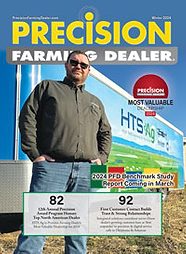In the next few years, the unmanned aircraft industry is expected to skyrocket, creating 70,000 jobs and a $13 billion economic impact.
And much of that growth will be in agriculture.
Around 100 industry leaders and farmers are expected to converge on the University of Georgia’s Tifton campus March 28 and 29 for an Association for Unmanned Vehicle Systems International conference, sponsored by the Center of Innovation in Agribusiness. It is the second time the Atlanta chapter of AUVSI has brought together aircraft engineers, plane manufacturers and farmers to discuss how unmanned vehicles will play a role in precision agriculture; the last conference was at Georgia Tech more than a year ago.
“At the (Georgia) Center of Innovation in Agribusiness, we support new innovative ideas and the companies that will save our farmers time and money and help rural Georgia,” said center Director Donnie Smith. “That’s why we are sponsoring this particular conference.”
UAS (unmanned aircraft systems) technology allows a farmer to check to conditions in the field – and get a better overall picture – without spending time and money to travel himself. The overhead images could track irrigation, pests like nematodes and even nutrients in the soil, Smith said.
“I think there’s going to be a whole new area for managing crop production that would allow increased yields and profits,” he said.
The biggest advantage – and the one UAS in agriculture advocates mention most often – is the ability to check for disease. Many of the companies offering UAS services go well beyond traditional photography and offer crop imaging technology that would allow a farmer to spot disease and stop the damage early.
Universities across the country are starting programs in UAS, which could employ hundreds of people by 2015, according to the Association for Unmanned Vehicle Systems International.
John Perry, a University of Florida grad, was one of those early innovators who sees big potential in unmanned aircraft for agriculture. Perry’s company, Altavian, was borne out of a collaboration between University of Florida students working for a decade to design aircraft to survey wildlife and plants. Today, the Gainesville, Fla., company employs 18 people.
“The AUVSI recently released its economic impact report and found a huge impact in agriculture,” Perry said. “Agriculture is definitely a big part of unmanned aircraft.” Altavian has found early success in assessing the health of infrastructure for the Army Corps of
Engineers and recently landed a share of a $248 million U.S. Army contract.
But, along with the AUVSI, both Perry and Smith see agriculture making hay off the technology in the future.
“Farmers will use and adapt new technologies,” Smith said. “There were very few autonomous tractors on the farm a few years back. But farmers will adapt new technology if it will save them time and money.”
At the conference, attendees will hear from industry and research leaders including Reza Ehsani from the University of Florida Citrus Research Center talking about how small UAVs can be used in agriculture; Gary McMurray, from Georgia Tech Research Institute’s Food Processing Technology Division talking about how a mobile robot can detect diseases in the field, and John Beasley from the University of Georgia talking about what UAVs could show a peanut producer.
For more about the conference, go to http://extension.uga.edu/calendar/event.cfm?pk_id=2220


![[Technology Corner] Future of Drone Use in U S Brighter After FAA Regulation Change](https://www.precisionfarmingdealer.com/ext/resources/2024/04/11/4-12-24-Slides_OTR14.jpg?height=290&t=1712932011&width=400)



Post a comment
Report Abusive Comment